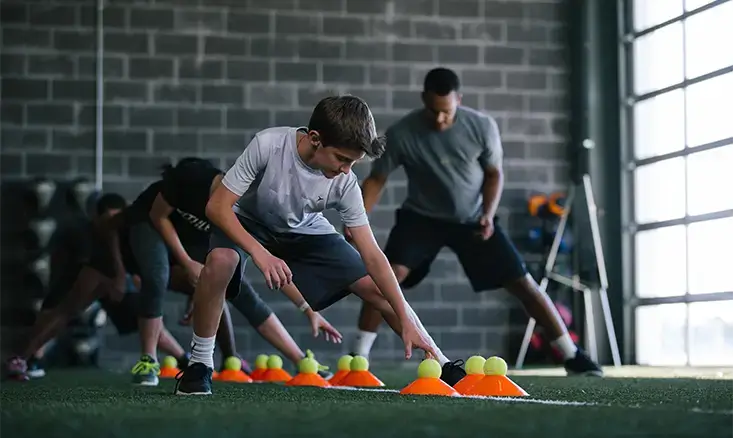Soccer drills for solo practice can turn an ordinary afternoon with a ball into something that changes the way you play.
There is a quiet kind of joy in training alone, where the game slows down and it’s just you and the sound of the ball at your feet. These moments are where touch becomes softer, passes more accurate, and shots more instinctive.
Every player who has ever dreamed of improving knows this feeling. You might be on an empty field with a goal in front of you, or simply kicking against a wall in your backyard.
Wherever you are, these simple drills sharpen the skills that make the biggest difference once the match begins. They are small building blocks that, repeated enough times, turn into confidence and creativity on the pitch.
Drills to Practice on the Pitch
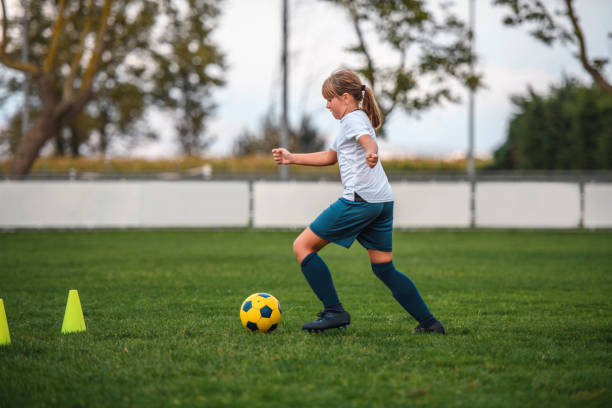
A full field is like a blank canvas for a player working alone.
With wide-open space and a goal in front of you, you can simulate match situations, refine your finishing, and test your endurance in ways that smaller areas can’t quite capture.
If you have the luxury of stepping onto a pitch, even for a short session, make the most of it.
1. Side Shooting
Scoring from wide angles is one of the hardest skills in soccer.
Even seasoned professionals struggle to consistently bend the ball past the keeper from the edge of the box or the touchline.
Practicing side shooting alone builds confidence in those tricky moments when the ball rolls across the wing and there’s a split-second window to shoot.
Set up on either side of the penalty area and strike the ball at sharp angles toward goal. Alternate between using your laces to drive the ball and the inside of your foot to curl it.
Switch sides often so both feet develop evenly.
The goal is not to smash the ball with all your strength but to master placement far post, near post, and upper corners.
As you repeat the motion, you begin to feel how the ball reacts to spin, speed, and surface.
Over time, side shooting teaches not just accuracy but creativity. A well-bent ball curling inside the post can become your signature move, the kind of finish defenders dread.
CHECK OUT | Creative Soccer Drills: How to Play the Pirate Game with Pugg Goals
2. One-Touch Shooting
Matches move fast. Sometimes, there is no time for an extra touch. A rebound drops at your feet, or a teammate flicks a pass across the box, and you must strike immediately.
That’s why one-touch shooting is such a vital skill to practice.
You can work on this alone with a little imagination.
Find a solid surface, perhaps a rebound net, a wall, or even a portable board that will send the ball back toward you after a pass.
Pass the ball firmly against it, then, as it comes back, hit it first-time toward goal. Focus on staying balanced and directing the shot rather than blasting it wildly.
Vary the distance and target different parts of the net.
Left foot, right foot, near post, top corner; mix it up until you start feeling natural in front of goal.
When you play matches, you’ll notice the difference. That nervous rush in front of the net disappears because your body already knows what to do.
3. Penalty Kicks
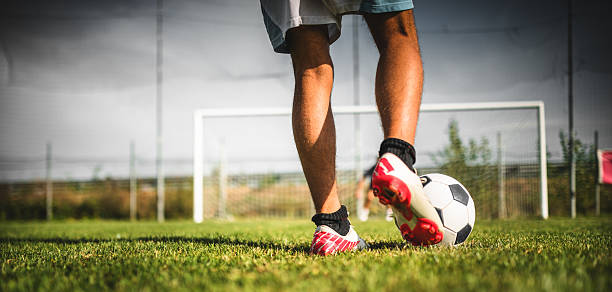
The penalty spot is one of the loneliest places in soccer.
The stadium falls silent, the goalkeeper stares you down, and it’s just you, the ball, and twelve yards of grass. Confidence in that moment comes from repetition, and repetition can be done entirely alone.
Practicing penalties on your own builds muscle memory and calmness. Place the ball, pick your corner, and strike. Keep switching placement; low and hard into the corners, chipped down the middle, driven into the roof of the net.
Train yourself to disguise your run-up and finish with precision.
The more penalties you practice, the more your body learns the rhythm of the kick.
You’ll begin to trust your technique under pressure, knowing you’ve taken hundreds of the same shot in solitude.
CHECK OUT | How to Prevent Burnout in Female Soccer Players: 10 Helpful Tips
4. 25’s Dribbling
This drill combines conditioning with ball control, making it perfect for building stamina while sharpening dribbling technique.
Lay out cones or markers about five yards apart in a straight line. Dribble through them one way using the inside of your feet, then return using the outside.
Repeat in sets of 25 touches. Increase the pace gradually, pushing your heart rate higher with each repetition.
The drill strengthens both close control and fitness. It mimics the kind of tight dribbling you need in crowded midfields while training your lungs and legs for long matches.
Be it you’re weaving through defenders or tracking back after a turnover, 25’s prepare your body to keep moving with the ball glued to your feet.
Drills to Practice Anywhere
Not every player has access to a pitch, but the game belongs to anyone with a ball.
A garage wall, a driveway, a backyard, or even a living room can transform into a training ground. The focus shifts from shooting to ball control, passing, and agility.
What matters most is consistency, the willingness to pick up the ball each day and refine small details until they shine.
5. Kicking Against a Wall
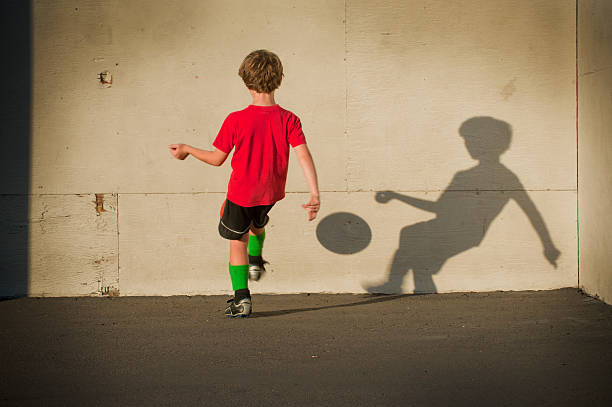
The wall has always been a soccer player’s best training partner. Simple, reliable, and endlessly useful, it gives back exactly what you put into it.
Stand a few yards from a wall and pass the ball firmly. Control the rebound and pass again, repeating in rhythm. Increase intensity by using one touch only; pass and control in a single movement.
Challenge yourself with different techniques: inside foot, outside foot, laces, or even volleys.
A wall never tires, and it forces you to react quickly. The ball comes back at different speeds and angles, demanding concentration and sharp control.
Many great players grew up with nothing more than a ball and a wall, and it shows in the confidence of their touch.
CHECK OUT | Fun and Competitive 4v4 Soccer Drill with Small Gates
6. Triangle Drill
Quick direction changes are the essence of dribbling. The triangle drill helps sharpen those movements while improving balance and coordination.
Place three markers in the shape of a triangle, about three to five yards apart. Dribble around them in different patterns; clockwise, counterclockwise, zig-zagging between each point.
Focus on using both feet equally. Keep the ball close, and push yourself to increase speed without losing control.
What makes this drill valuable is its adaptability.
Make the triangle wider for long touches or tighter for sharp cuts.
Add more cones if space allows. The repetition trains your body to turn fluidly in tight spaces, the kind of skill that turns defenders inside out during matches.
7. Header Drills
Though headers may be limited in younger age groups, they remain vital in higher levels of soccer. Goals, clearances, and defensive stops often depend on heading technique.
Practicing alone ensures you are ready when those moments arrive.
Use a ball and a wall, tossing it upward and meeting it with your forehead. Focus on proper technique: eyes open, neck firm, contact with the center of the forehead.
Practice directing the ball in different directions; downward, upward, side to side.
Another option is juggling with headers.
Toss the ball up and keep it airborne using only your head, trying to maintain rhythm and control. Even a few consistent touches will strengthen coordination and build comfort with this often-overlooked skill.
CHECK OUT | How to Run a Perfect 7v7 Soccer Scrimmage for Youth Teams
8. Agility and Quickness Drills
Soccer rewards players who move with sharpness. Quick cuts, sudden bursts, and light feet separate average players from those who dominate their positions.
Agility drills can be done almost anywhere.
Set up cones, ladders, or simple markers, then design an obstacle course to sprint through.
Shuffle side to side, sprint forward, backpedal, and cut sharply.
The key is intensity; move as though an opponent is on your shoulder.
Incorporate the ball by dribbling through the course. Your touches should stay light and controlled even as your feet move quickly.
Practicing agility alone builds the foundation for explosive match performances, where one quick step can create space or shut down an attack.
9. Juggling
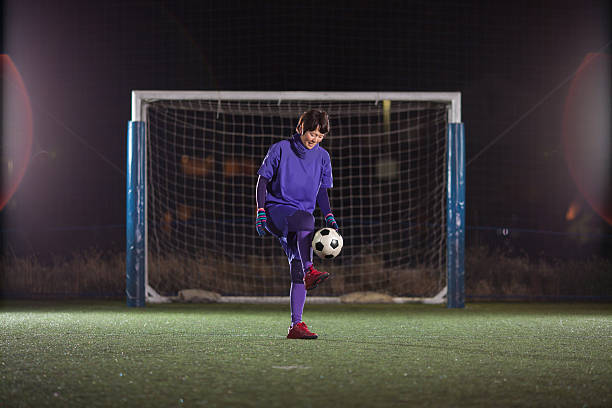
Few drills capture the heart of soccer like juggling. It’s simple, pure, and endlessly challenging. With just a ball, you can practice anywhere, balancing touch and focus with every kick.
Start with your thighs, then your feet, alternating between them.
Count how many touches you can string together without letting the ball drop. As your control improves, add variety; outside of the foot, inside, shoulders, and even head.
Juggling teaches delicate control and forces you to stay light on your feet.
More importantly, it builds a natural connection with the ball. After hundreds of touches in the air, dribbling and receiving passes on the ground feel smoother and easier.
10. Shadow Dribbling
This drill may look simple to outsiders, but it’s one of the most powerful ways to internalize movement with the ball.
Shadow dribbling means dribbling freely in an open space while imagining defenders pressing against you.
Keep your touches light, vary your pace, and mix in feints, stepovers, and turns.
The goal is not just technical precision but creativity. By practicing imaginary scenarios, cutting away from a sliding tackle, spinning to escape pressure; you prepare your body for real matches.
It’s an exercise of both body and imagination, sharpening instincts until your dribbling feels natural and instinctive when opponents are truly in front of you.
CHECK OUT | Youth Soccer Passing Warm-Up Drill for Better Team Play
Why Training Alone Matters
Soccer may be played in teams, but progress often begins in solitude. Practicing alone allows you to focus entirely on your weaknesses without distraction.
A hundred extra touches each day add up, shaping your confidence and readiness when match day comes.
Team sessions polish tactics, positioning, and chemistry. Solo sessions refine touch, balance, stamina, and finishing.
Together, they form a complete player; one who knows not only how to play with others but also how to trust their own skills when under pressure.
Even professionals who earn millions and play in front of thousands carve out time for solo training. They know the game rewards consistency, and consistency comes from quiet hours when no one else is watching.
Every player, no matter their level, can benefit from the discipline of working alone.
With the right drills, a little creativity, and steady commitment, the ball becomes not just an object but an extension of your body.
That connection is what transforms ordinary players into extraordinary ones.
Closing Thoughts
Solo training is not glamorous. It lacks the cheers of teammates or the energy of competition. But it is in these moments, with sweat dripping and the sound of a single ball echoing against walls or nets, that players truly grow.


